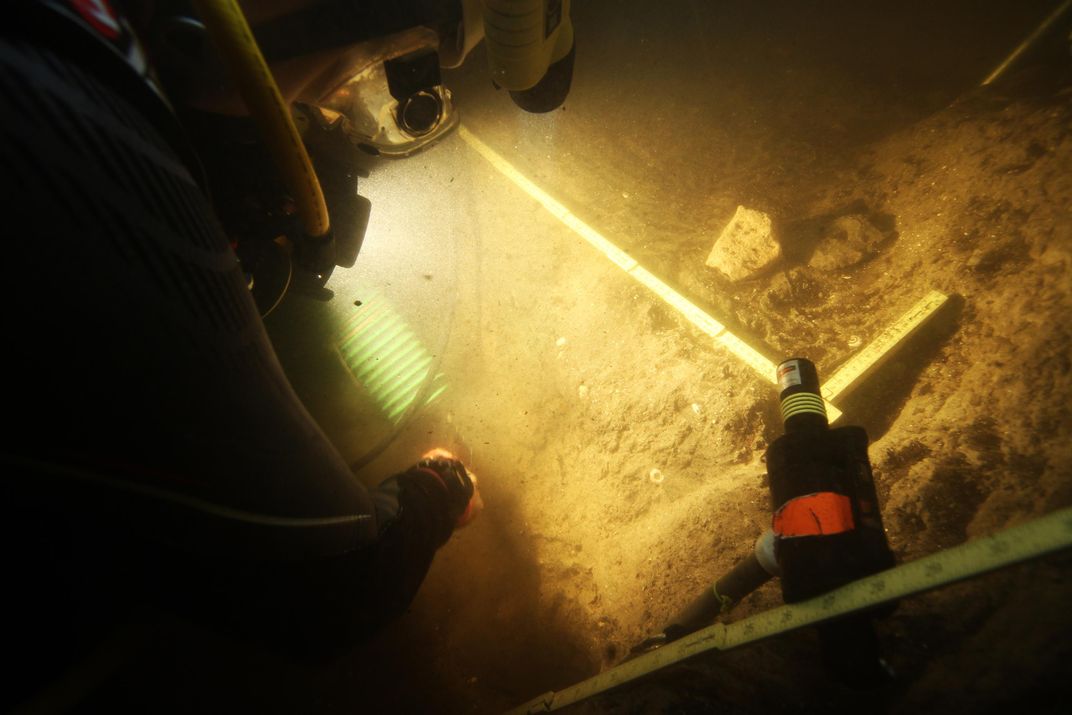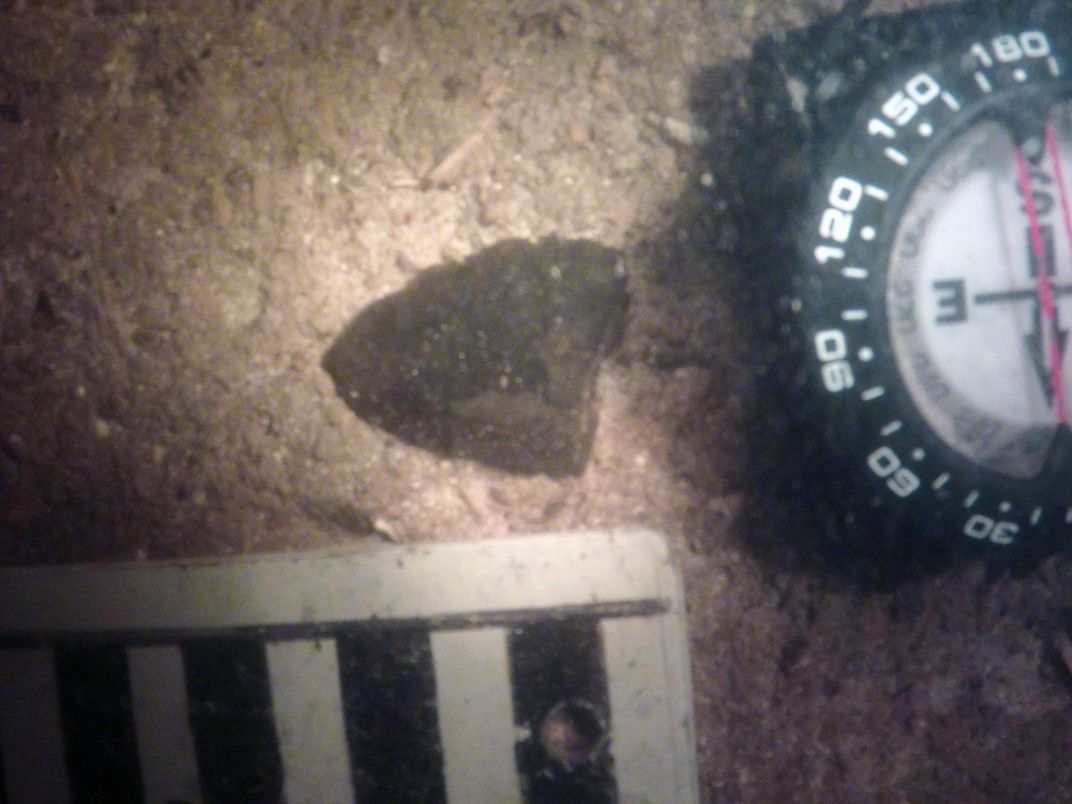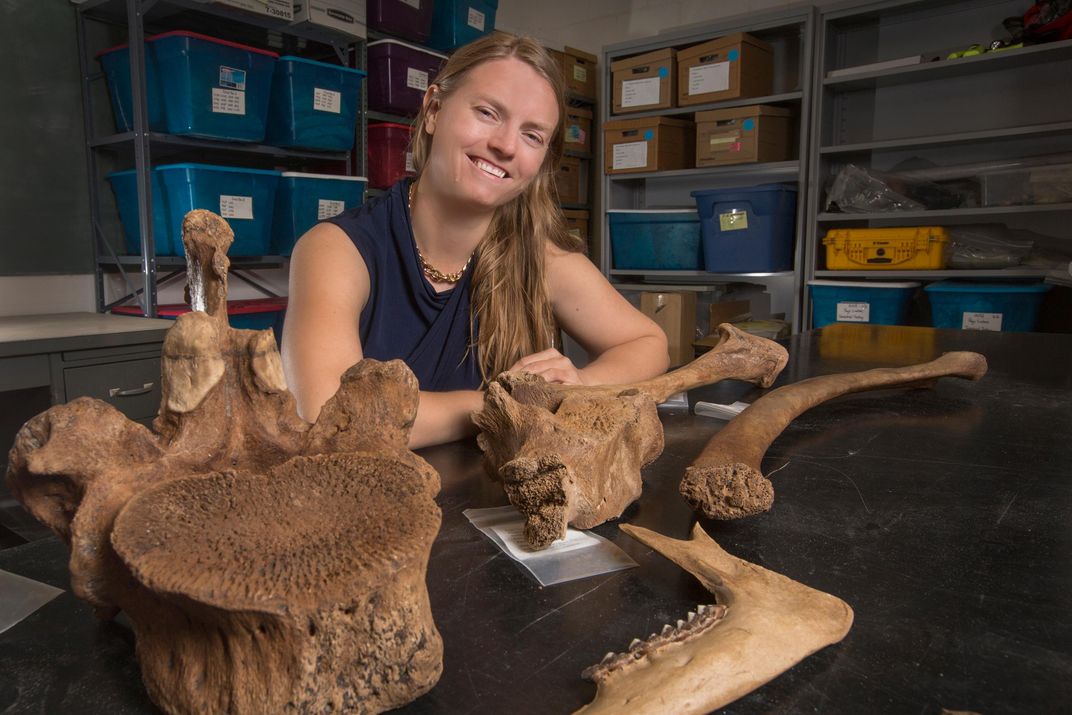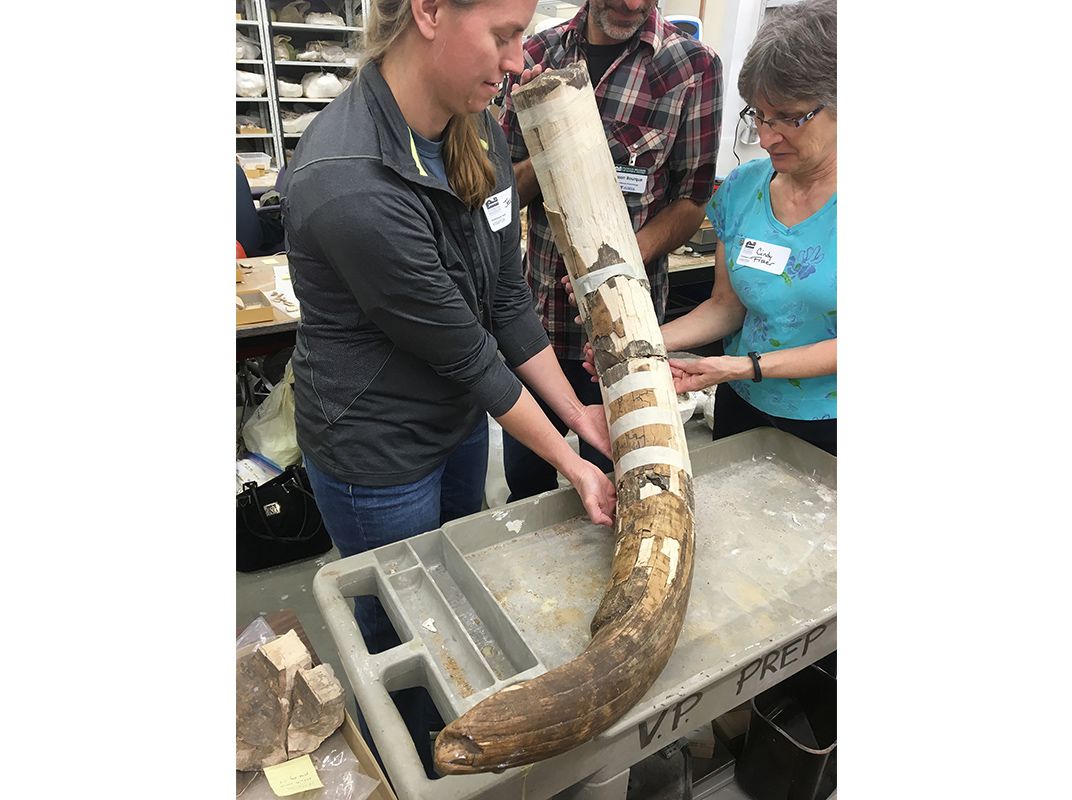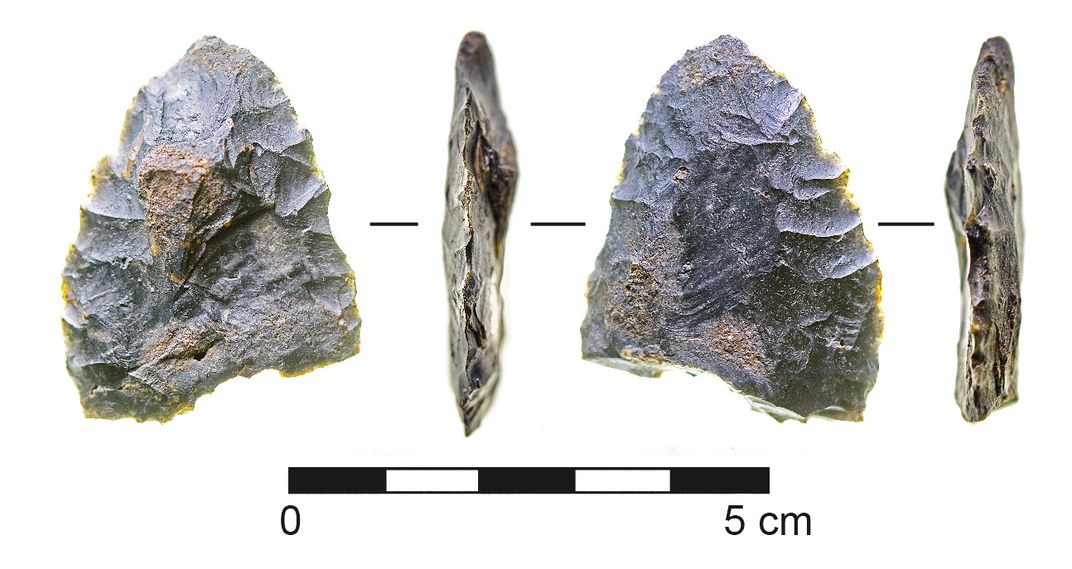Underwater Finds Reveal Humans’ Long Presence in North America
Stone tools and mastodon remains help show that the Americas were peopled more than 14,000 years ago
/https://tf-cmsv2-smithsonianmag-media.s3.amazonaws.com/filer/bd/6d/bd6d76ee-c5ac-487c-a8af-b083afcbd0ed/halligan5hr.jpg)
A handful of prehistoric stone tools and the remains of an extinct animal found in a Florida river reveal a glimpse of an ancient scene: About 14,550 years ago, hunter-gatherers likely butchered or scavenged a mastodon near a small pond. The age of these objects suggests that humans reached the southeastern United States as much as 1,500 years earlier than scientists had thought.
The finds also add to evidence from other sites of an early human presence in the Americas—evidence that has gradually been overturning long-held beliefs about when humans first reached the Americas and how they got there.
Archeologists recently retrieved the artifacts from a place near Tallahassee called the Page-Ladson site, which is located 26 feet underwater in a sinkhole on the Aucilla River. Previous excavations conducted between 1983 and 1997 at this location had yielded a mastodon tusk with grooves that looked like cut marks that might have been inflicted by humans, along with some stone artifacts. But that evidence, found in a layer of sediment that was more than 14,000 years old, was deemed too ambiguous to determine whether it truly bore signs of early human activity.
Years later, Jessi Halligan, an anthropologist at Florida State University, and her team went back to the site to take another look at the archeological material hiding undisturbed in the riverbed. Between 2012 and 2014, the researchers excavated more bones and several stone tools, including a biface—a primitive, human-manufactured stone knife. "There is absolutely no way it is not made by people," says Halligan. "There is no way that's a natural artifact in any shape or form."
The team also reexamined the previously identified mastodon tusk. The grooves in its surface were indeed cut marks made by humans during the removal of the tusk from the animal’s skull, the researchers conclude in a new study published in Science Advances.
Radiocarbon dating of the sediment in which the mastodon remains and the tools were found revealed that the objects are about 14,550 years old. That makes Page-Ladson one of only a few sites in the Americas with archaeological evidence of human presence dating back further than 14,000 years.
Until a few decades ago, when the first of these sites was investigated, scientists had believed that the Americas were first colonized by people called the Clovis, who settled in North America about 13,000 years ago and spread southward. But evidence from older, or "pre-Clovis," sites such as the one in Florida, has suggested that the original peopling of the continents occurred earlier than that. “That is a big deal, partially because it means we were wrong about Clovis being first, and we need to start figuring out what the real story is," says Halligan.
Jon Erlandson, an archeologist at the University of Oregon, who was not involved in the study, agrees. "I think this is like the fifth nail in the coffin on the Clovis-first hypothesis," he says.
But both scientists stress that, until recently, the idea of pre-Clovis sites was very controversial. "Fifteen years ago…it was at the point that, if you proposed a pre-Clovis site, you had to expect that everybody thought you were a quack," Halligan says. “Ten years ago, some people would have been supportive and most people would have thought you were a quack."
The early dating of pre-Clovis sites has also shed doubt on the mainstream narrative of how people arrived in the Americas. This holds that humans first arrived in North America from northeast Asia across a land bridge that spanned what is now the Bering Strait between Russia and Alaska. These people then supposedly spread to the interior through the so-called ice-free corridor—an area of land between two giant ice sheets that once covered most of Canada and the northern United States.
The problem with this theory is that the ice-free corridor did not open until 14,000 years ago or later, but the new research shows that 400 to 500 years before that people were already in Florida, says Halligan. "So the ice-free corridor is not our answer for how the Americas were initially colonized," she says.
"There has been a lot of resistance to the idea that people could enter North America from anywhere other than the Bering Strait," says Linda Scott Cummings, an archaeobotanist at the PaleoResearch Institute in Golden, Colorado, who was not involved in the new study. "It really thrills me to see that there is widespread interest in exploring the other possibilities."
One idea, for example, suggests that the first people may have come to the Americas in boats, following coastlines from northeast Asia, down the Pacific Coast. But even if that had been the case, Halligan notes that Florida is a really long way from the Pacific. "How did people get here? When did people get here?" she says. "To me, all of the original questions we have been asking about the peopling of the Americas—those questions are open to research again."
